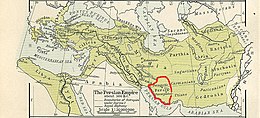Kings of Persis | |||||||||
|---|---|---|---|---|---|---|---|---|---|
| after 132 BC–AD 224 | |||||||||
 Approximate extent of the kingdom | |||||||||
| Status | Vassal of the Parthian Empire | ||||||||
| Capital | Istakhr | ||||||||
| Common languages | Middle Persian | ||||||||
| Religion | Zoroastrianism | ||||||||
| Government | Monarchy | ||||||||
| King | |||||||||
• after 132 BCE – ? | Darayan I (first) | ||||||||
• 211/2–224 | Ardakhshir V (last) | ||||||||
| Historical era | Late antiquity | ||||||||
• Established | after 132 BC | ||||||||
• Incorporated into the Sasanian Empire | AD 224 | ||||||||
| Currency | Drachm | ||||||||
| |||||||||
| Today part of | Iran | ||||||||

The Kings of Persis, also known as the Darayanids, were a series of Iranian kings, who ruled the region of Persis in southwestern Iran, from the 2nd century BCE to 224 CE. They ruled as vassal kings of the Parthian Empire, until they toppled them and established the Sasanian Empire.[1] They effectively formed some Persian dynastic continuity between the Achaemenid Empire (6th century BCE – 4th century BCE) and the Sasanian Empire (3rd century CE – 7th century CE).[1]
- ^ a b Wiesehöfer 2009.
